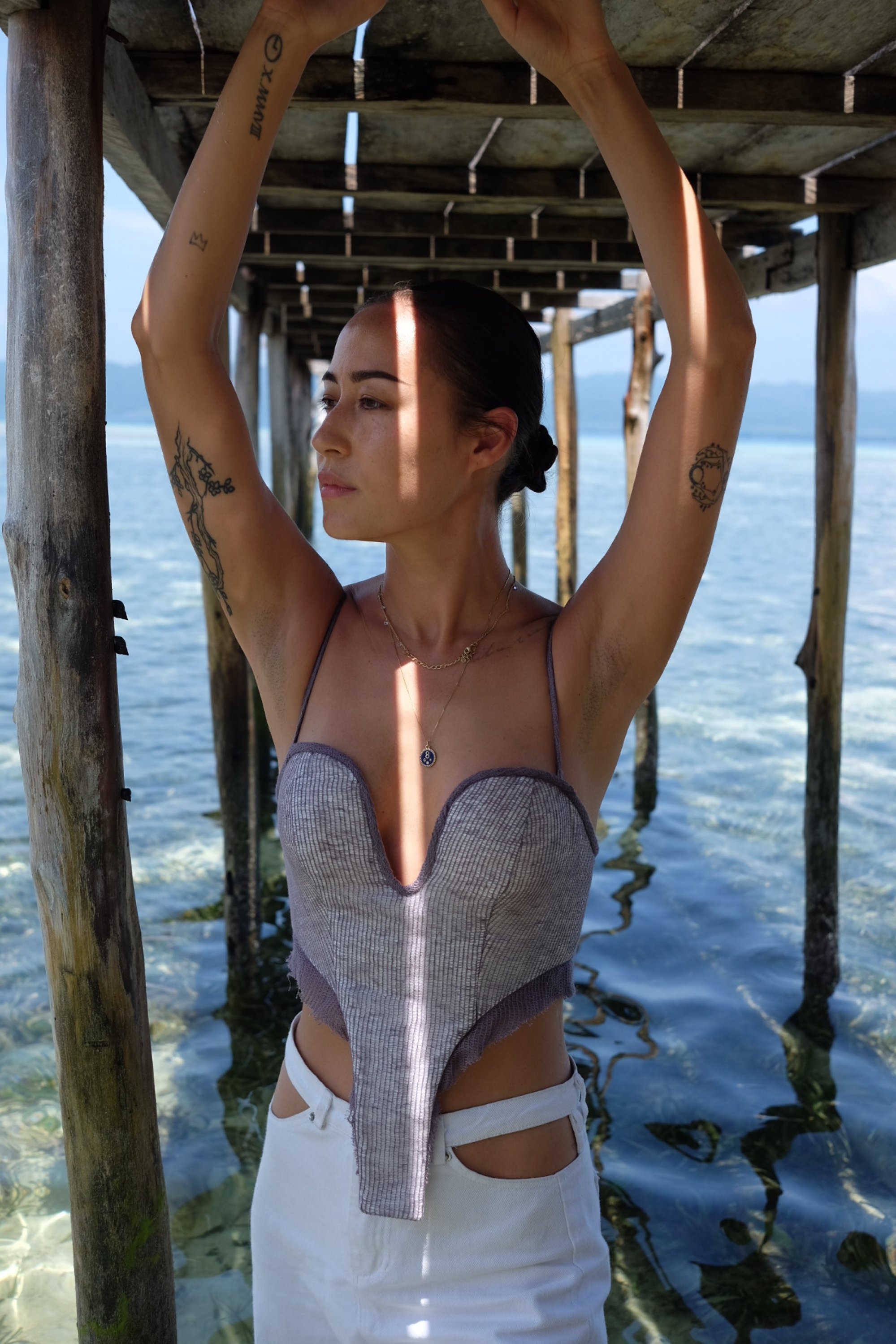
Profile | Wong Kar-wai films inspired her: fashion designer’s Chinese style looks are for the woman who ‘is a free spirit, a rebel’
- Inspired by facets of a culture she had missed as a child, Lisa Von Tang – born in Canada to Chinese and German parents – created a brand with Chinese style
- Her latest collection features looks that echo the silhouette and design of a traditional Chinese dress – like those in Wong Kar-wai’s ‘In the Mood for Love’
As a young child, Lisa Von Tang craved cultural diversity.
Born in Winnipeg, Canada, to a Chinese mum from Xiamen and a German dad, she spent her early years living on the prairie before moving to a tiny town named Swan River 500km northwest of the city, followed by a stint in the Okanagan Valley in British Columbia.
“It’s not the sexiest place fashion designers are usually born,” she says with a laugh, adding that her mother was often the only Chinese person in town. “This is not your average Central Saint Martins story,” she adds, referring to the arts college in London where many designers train.
“It was so nice to be around that mix and I finally felt comfortable,” she tells the Post, wearing one of her own statement shearling jackets during a Zoom call from Milan, in Italy.
Although she had long set her heart on becoming a fashion designer, Von Tang’s goal did not feel all that attainable and she decided to study political science instead.

“I didn’t have the role models in the industry, the mentorship, so it seemed like a far-fetched dream,” she says.
Being raised by a hardworking immigrant and single mother had an impact, too. “She was like, you’re a doctor or lawyer, you’re not going to do something risky.”
Nonetheless, Von Tang’s namesake brand was born – initially as a hobby, then as an official business in 2017, by which time she had settled in Singapore.
Inspired by these facets of a culture she had missed as a child, she began making silk velvet robes framed with brocade trim, tailored suiting and quilted bomber jackets for “people who’d always wanted something Asian inspired but not ‘Chinese New Year’”.

Looking back, the designer admits her work was more about cultural pride than producing a commercially viable product. “I was loud, proud, Asian and in your face,” she says.
Within a few years, she had attracted a loyal customer base and grew the brand online during the Covid-19 pandemic through online platforms including Farfetch and The Webster. A global reach, and a wider network of stockists, are very much on the cards.
The collection was inspired by the feng huang, a Chinese mythological bird, and some looks, like a sequinned catsuit, referenced the motif explicitly. Others, like the silk separates boasting a liquid-like sheen, were more pared back.
“It’s more me now: me full-bodied, and reflecting the aspects of my heritage, but not so bluntly,” Von Tang says.

“The role of the Asian woman has historically been quiet power, power from behind, and that’s reflected in the silhouettes, which are elegant and demure and hospitable,” she says. “This idea of what makes a good lady, and a respectable woman, I wanted to smash it and create a different version.”
The Lisa Von Tang woman, she says, is a free spirit, a rebel, and embodies elements of Asian culture but owns it in different ways.

Von Tang’s goal is to inspire her growing cohort of customers to appreciate and flaunt Chinese and Asian design.
“I get a sense of satisfaction when I see elements of Asian design worn out of context,” she says. Appreciation and credit are key, and the designer hopes her work will draw a bigger community by reflecting her third-culture upbringing.
“I foresee future collections where we also expand on the definition of what it means to be Asian from multiple viewpoints: Asian-American, mixed, trans, LGBTQ,” says Von Tang.

